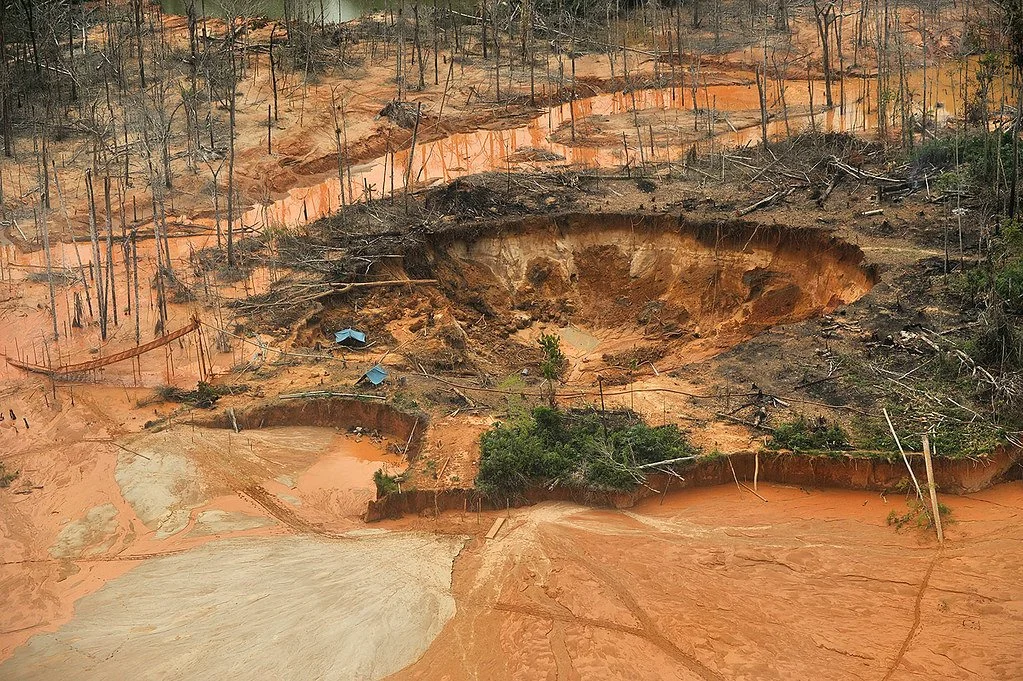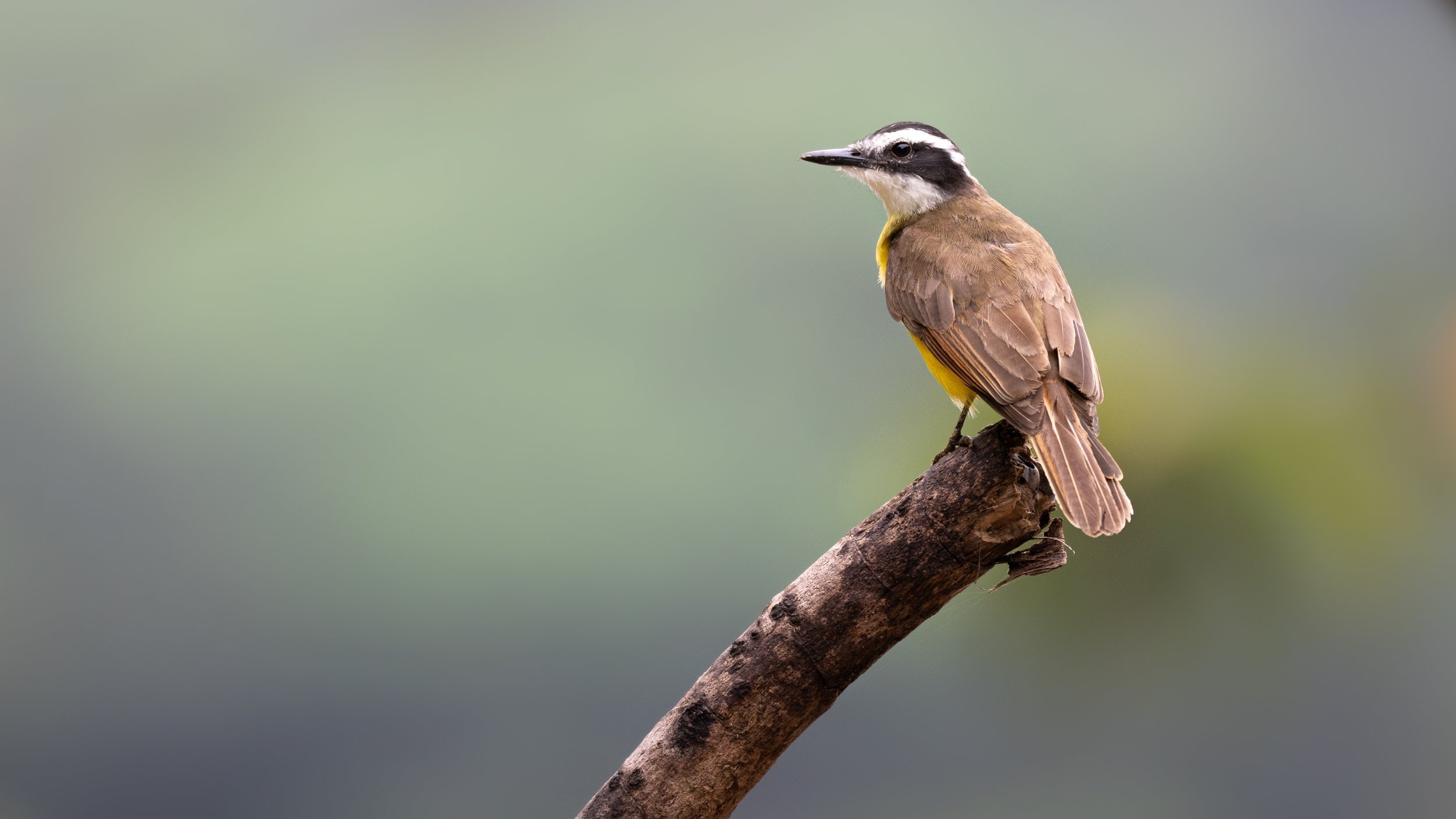On the Frontlines of Gold Mining in the western Amazon
Along the Araza River in the southern Peruvian Amazon, a man leans against a large canoe, puffing his cigarette. A tattered Peruvian flag flaps brazenly in the breeze behind him. “There are big gold nuggets up there my friend. You should come, come and sightsee with us. See the river, the animals, and work at the mines for a day. If you get lucky, afterward, we go to the city and can get whatever we like. Beer, your pick of the girls, whatever you want.”
As soon as I tell someone I am looking for butterflies, it is instantly disarming — even in a place where illegal gold miners don’t appreciate outsiders. They were not skeptical at all, as I carried a thin 4 meter aluminum pole topped with a wispy loop of fine silk (as not to damage butterfly wings). The butterflies I was hunting were flying across the river all morning, and on a cliff overlook, I had been watching and waiting for one to pass close enough so that I could take a shot.
But, after a day of no luck, hungry and thirsty, I caught a ride back into the nearby town, Mazuko. It was easy, as the road that stretched perpendicular from the river was full of collectivos — shared taxis that moved in and out of the forest to unload miners who would boat downriver in search of gold.
The town of Mazuko was named after a Japanese man who settled at the base of the Andes mountains. He would grow vegetables for loggers and miners that had begun to work the region. Locals tell stories that, as far back as the Incan empire, people used palm brushes to sweep the crevices in pools under rapids, looking for grains of gold that nestled into these comfortable hideouts.
In the main plaza of Mazuko is a new monument, filled with stones from the river. Shooting up from the stones is a “fountain” of gold — really just several painted concrete bars. Just behind the fountain is a statue of the town name, painted beautifully by a local artist. From the painting, a jaguar and young Indigenous girl stare directly out the gold fountain, almost as if glaring with distain.
The construction of the interoceanic highway changed the region of Madre de Dios, Peru, from a quiet, peaceful backwater to a gold mining capitol. Along the streets, various shops display signs stating "WE BUY GOLD". The highway rumbles with the constant arrival of tanker trucks, carrying gasoline to power the pumps, backhoes, and mechanized mining equipment. At night, buses arrive at the dusty terminal, filled with people who have traveled down from the Andes mountains. Collectivos swarm the buses, calling out the names of individual mines to which they will take their clients.
“Huepethue Huepethue! La Pampa La Pampa vamos!”
In moments hundreds of passengers have squeezed into the various vehicles which zoom off into the darkness. Many are heading to La Pampa, an informal boom town that sprung up on the highway just an hour from Mazuko. The red clay and post-apocalyptic terrain that was once verdant jungle reflects the extractivist ills of the society that has sprung up. Trafficking of young girls for prostitution, forced labor, mass graves and shootings between rival criminal groups are commonplace here.
See Gold Mining’s Footprint from Above — Use the Interactive Map Below
The next day, I met with a friend and his family. They kindly offered to drop me off at another river to search for more butterflies on their way to work. With a few children in tow, it looked like we were headed off for a swim and a picnic. But, as we bounce along in a carguero (motorcycle meets Isuzu truck), it is apparent that they, too, are looking for gold.
We arrive at the river, driving down into the mostly dry riverbed. Although the riverbed is composed of rocks and sand, the river itself looks like the slurry coming off a potters wheel. "First, we have to finish burning away the patch of forest we cut down, and then we dig down to the layer where we think there is gold. We look for the good stuff, gold dust. It's a higher carat than the nuggets and you get a better price."
It takes several tons of rainforest soil to get enough gold for a single gold ring. The area, in fact, is not incredibly rich in gold. This activity is viable only because of poverty and economic inequality, and the externalization of the huge environmental costs of gold mining.
On the Ground with Mining Operations: Carving into the Rainforest
All this processed soil washes into local waterways, it transforms streams and rivers, leaving sickly pools of water that shimmer with technicolor — one a grim yellow, the other a soupy blue-green. Worst of all, miners mix in mercury to extract the gold, and this contaminates the environment with a potent neurotoxin that will persist in the environment for thousands of years.
Toxic mercury levels in animals and plants near the mines are among the highest ever recorded. Contrary to popular belief, mercury is not necessary for artisanal gold mining. But entrenched supply chains and practices make switching to other methods difficult. Mercury causes all kinds of health issues, but it may take years for the effects to be seen. Many miners refuse to believe mercury is bad for their health. However, there are many examples that show that mercury pollution can cause severe human health crisis. Already in Madre de Dios, a large percentage of the population show mercury levels in their hair and blood that are far above the World Health Organization’s recommended limits.
“We used to work in La Pampa, but then the military started cracking down. So we fled and now we work just ourselves in the jungle. Here, no one bothers us.”, my friends father exclaimed. He was referring to what happened during Operation Mercury, a crackdown on the gold mining during 2019 to 2020. While this had some success in reducing the mining activity, it was short lived, and the mining has started up again, just more dispersed and harder to track.
In town, an acquaintance at a gold purchasing store explains the process. “The miners bring in the lump which has gold and mercury. We put it in this thing here that heats it and the mercury goes away. Then we are left with just the gold.” A vent from the little furnace goes out into the street.
“And where does the gold go?”, I ask.
“Well, it gets sent to Puno, where there are lots of legal mining operations, and then it is legalized. And then out of the country it goes.”
“Yeah, to Switzerland or something.”
She laughs.
The gold from these operations is laundered into legal mining operations in the Andes. Illegal gold exports from Peru were worth $6.4 billion-more lucrative than even the drug trade. This makes up nearly half of the gold exported from the country, and legality and environmental regulation are only weakly linked-as many permitted mining zones in Madre de Dios operate nearly the same as illegal ones.
And what for? Gold is a useful mineral due to its unique properties. Often people mention its role in electronics. However, the use of gold in electronics only accounts for about 7% of the gold used. By far the largest uses of gold are for jewelry and the financial sector (e.g., banking/investment) which collectively account for over 90% of the world gold demand.
Gold mining is a serious environmental problem in many parts of the Amazon, not just this one in Peru. The root cause is a value system that is seriously out of balance with the rest of the living world — one that values gold in safes and rings more than the forests that sustain us all.




